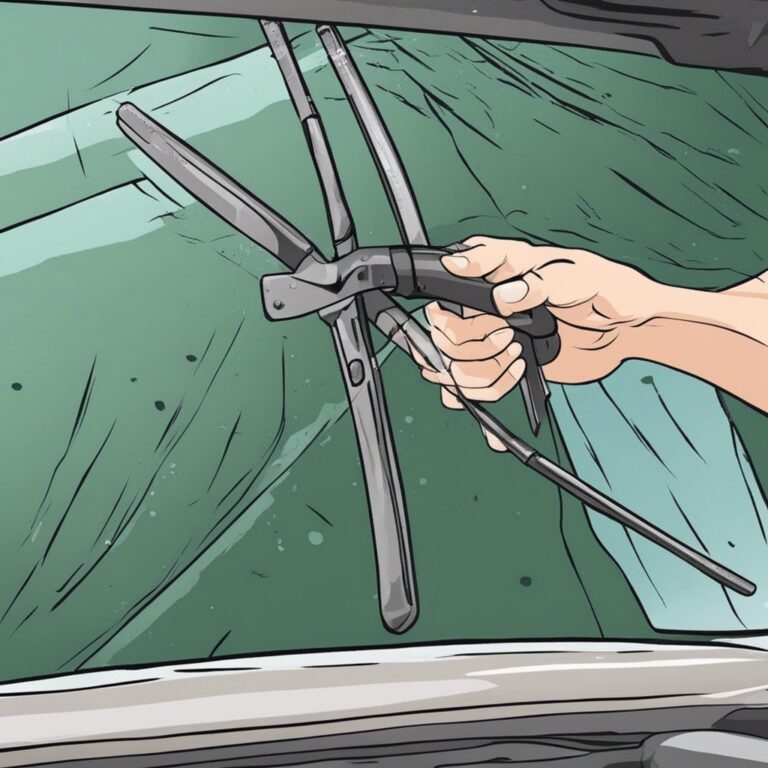Improve Braking Performance With Suspension Modifications: a How-To Guide
Improve braking performance with suspension modifications using this concise how-to guide. Upgrading your vehicle’s suspension can greatly enhance your braking capabilities, creating a safer and more efficient driving experience.
By optimizing the suspension system and components such as shocks, struts, and springs, you can improve weight transfer, reduce body roll, and increase tire contact with the road, resulting in superior braking performance. Whether you’re a performance enthusiast or just looking to upgrade your daily driver, this guide will provide you with the necessary steps to enhance your vehicle’s stopping power.
Let’s dive in and explore how suspension modifications can make a significant difference in your braking performance.

Credit: www.ebay.com
Enhancing Braking Performance
Upgrading your vehicle’s braking capabilities is crucial for safety and performance. One often overlooked aspect that can significantly impact braking is suspension modifications.
Benefits Of Suspension Modifications
- Improved stability and control during braking
- Reduced brake dive for more efficient stopping power
- Enhanced weight distribution for better traction
- Increased overall braking responsiveness
Choosing The Right Suspension Components
When selecting suspension components to enhance braking performance, consider factors such as:
- Quality of materials for durability
- Compatibility with your vehicle model
- Type of suspension system (coilover, air suspension, etc.)
- Professional installation for optimal results

Credit: issuu.com
Upgrading Brake System
Enhancing the braking performance of your vehicle is crucial for both safety and overall driving experience. Upgrading the brake system can make a significant difference in stopping power and control. In this guide, we will explore how to improve braking performance through suspension modifications. In this section, we’ll focus on the first step: upgrading the brake system.
Assessing Current Brake System
The first step in upgrading your brake system is to assess its current condition. Properly evaluating the existing components allows you to pinpoint areas that need improvement. Start by examining the brake pads, rotors, calipers, and brake lines.
- Brake Pads: Inspect the thickness and wear pattern of the brake pads. Look for signs of uneven wear or excessive wear.
- Rotors: Check for warping, grooves, or heat cracks on the rotors. These can negatively affect braking performance.
- Calipers: Ensure that the calipers are functioning correctly and not sticking. Stuck calipers can cause uneven braking and affect overall efficiency.
- Brake Lines: Examine the brake lines for any signs of leaks, damage, or corrosion. Damaged or corroded brake lines can compromise the brake fluid’s flow and lead to decreased performance.
Selecting Performance Brake Components
Once you have identified any issues with your current brake system, it’s time to select the appropriate performance brake components. Upgrading these components will help maximize your braking power and control. Here are some key factors to consider:
- Brake Pads: Look for high-quality brake pads that offer excellent stopping power and improved heat dissipation. Options like ceramic or semi-metallic pads are known for their enhanced performance.
- Rotors: Consider upgrading to slotted or drilled rotors, as they provide better heat dissipation and help prevent brake fade. These design features increase friction and allow for better cooling during heavy braking.
- Calipers: Upgrading calipers to ones with larger pistons or performance variants can enhance braking force and response. Ensure that the new calipers are compatible with your vehicle’s specifications.
- Brake Lines: Replace your stock brake lines with stainless steel braided lines. These lines offer improved durability, more responsive pedal feel, and reduced brake line expansion.
Fine-tuning Suspension
Fine-tuning your suspension is an essential step towards improving your vehicle’s braking performance. By making precise adjustments to your suspension settings, you can optimize your car’s handling and responsiveness, resulting in a safer and more enjoyable driving experience. In this section, we will explore how to fine-tune your suspension to enhance your braking capabilities.
Adjusting Suspension Settings
When it comes to improving your car’s braking performance, adjusting the suspension settings can make a significant difference. One of the key factors to consider is the suspension’s compression and rebound damping. Compression damping controls how fast your suspension compresses, while rebound damping determines how fast it extends. Finding the right balance between these two settings can improve your car’s stability during braking.
To adjust compression and rebound damping, you can turn the knobs located on your suspension components. Start by making small adjustments and then test your car’s braking performance to gauge the impact of each change. Remember that finding the optimal settings might require some trial and error, but the results will be worth it.
Considering Suspension Upgrades
If you’re looking to take your braking performance to the next level, considering suspension upgrades can be an excellent option. Upgrading your suspension can provide you with more advanced features and technologies specifically designed to enhance braking effectiveness.
Some popular suspension upgrades include replacing stock shocks and springs with high-performance alternatives. These upgrades offer increased control, reduced body roll, and improved weight transfer during braking, resulting in better overall braking performance.
Additionally, upgrading your suspension can allow you to fine-tune your settings further. With adjustable coilovers or suspension kits, you can have greater control over compression and rebound damping, making it easier to achieve optimal braking response.
| Benefits of Suspension Upgrades: |
|---|
| Improved handling and control during braking |
| Reduced body roll for enhanced stability |
| Increased weight transfer to the front wheels for better stopping power |
| Enhanced adjustability for fine-tuning suspension settings |
In conclusion, fine-tuning your suspension is a crucial step in improving your vehicle’s braking performance. By adjusting suspension settings and considering upgrades, you can optimize your car’s handling and overall braking capabilities. Remember to start with small adjustments, and test each change to find the best setup for your specific driving needs.
Optimizing Traction
Enhancing your vehicle’s traction is crucial for improving braking performance. By optimizing grip, you can enhance safety and control on the road.
Improving Grip With Tire Selection
Choose tires that are specifically designed for enhanced traction in various road conditions. Opt for high-quality tires with superior grip.
- Select tires with the right tread pattern for improved traction.
- Consider tires with a softer rubber compound for better grip.
Enhancing Handling With Alignment
Proper alignment plays a key role in optimizing traction and handling. Ensure your vehicle’s alignment is set correctly to maximize grip.
- Regularly check and adjust wheel alignment for optimal performance.
- Alignment adjustments can improve cornering stability and traction.
Professional Guidance Vs. Diy
When it comes to improving your vehicle’s braking performance, suspension modifications can be a game-changer. One important decision you’ll need to make is whether to seek professional guidance or take the DIY route. Both options have their own benefits and drawbacks, so let’s explore them further.
Benefits Of Professional Installation
Professional installation of suspension modifications offers several advantages. Mechanics have the expertise and equipment to ensure that the modifications are done correctly. Additionally, they can provide personalized recommendations based on your vehicle’s specific needs. By opting for professional installation, you can have peace of mind knowing that the job is in capable hands.
Steps For Diy Suspension Modifications
If you’re inclined towards a hands-on approach, DIY suspension modifications can be a rewarding endeavor. However, it’s essential to proceed with caution and follow a systematic process. The following steps can guide you through the DIY process:
- Research: Gather information about the specific suspension modifications you plan to undertake.
- Assessment: Evaluate your vehicle’s current suspension system and identify areas for improvement.
- Product Selection: Choose the appropriate suspension components based on your vehicle’s make and model.
- Preparation: Gather the necessary tools and materials for the installation process.
- Installation: Follow the manufacturer’s guidelines and carefully install the chosen suspension modifications.
- Testing: Conduct a thorough test to ensure that the modifications have been installed correctly and are functioning as intended.

Credit: simracingsetup.com
Frequently Asked Questions Of Improve Braking Performance With Suspension Modifications: A How-to Guide
How Can I Improve My Braking Performance?
To improve braking performance, ensure proper maintenance, including brake pad and rotor checks. Upgrading to high-quality brake components can enhance stopping power. Additionally, practicing smooth application of brakes and maintaining proper tire pressure can optimize braking performance.
How Does Suspension Help Braking?
Suspension helps braking by maintaining tire contact with the road, improving grip and stability. This enhances overall control and reduces stopping distances for safer braking performance.
What Are The Same Things You Can Do To Make Your Brake Better?
To make your brakes better, you can make sure they are properly adjusted. Regularly inspect and replace worn brake pads and rotors. Keep your brake system clean and free of debris. Follow proper driving techniques like gradual braking and avoiding sudden stops.
Maintain your vehicle’s brake fluid level and quality.
How Do You Modify A Brake System?
To modify a brake system, follow these steps: 1. Choose the right brake components. 2. Upgrade the brake pads and rotors for better performance. 3. Install a brake booster to enhance braking power. 4. Adjust the brake pedal height and position for comfort.
5. Bleed the brake system to remove air and ensure proper function.
Conclusion
Enhance your vehicle’s braking system by optimizing your suspension with these effective modifications. Improve safety and performance on the road. Elevate your driving experience with simple adjustments that make a significant difference. Take the leap and experience smoother, more responsive braking like never before.



